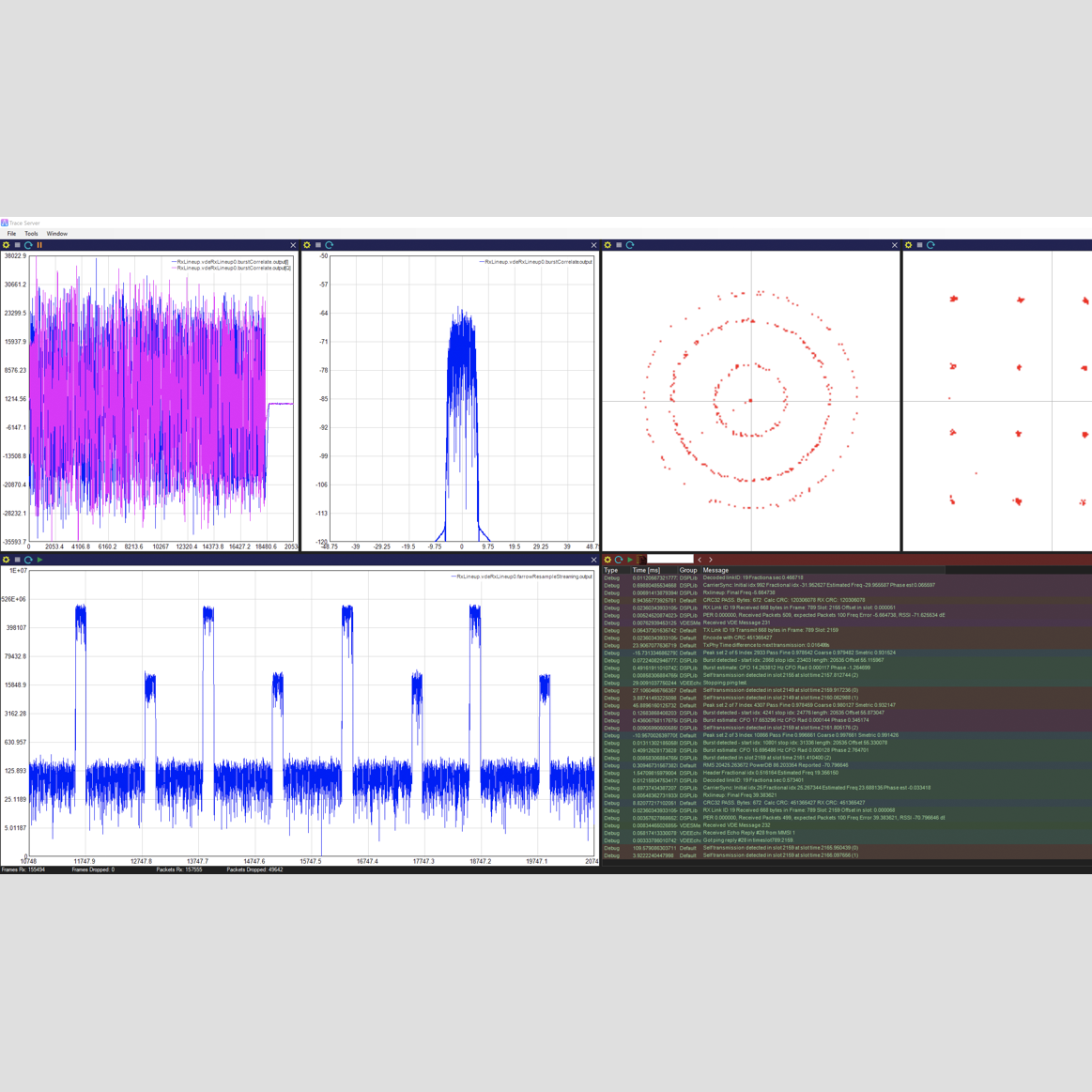
About us
S3C products are developed in-house by a team of specialists from the maritime, aerospace and signals intelligence industries. For over two decades we have serviced the global communication industry with our range of advanced Software Defined Radio (SDR) solutions and bespoke hardware.
Our products are developed using an in-house developed SDR Framework platform which provides deterministic, low-latency performance and scales over embedded platforms - from entry level processors to modern system-in-package processors with multi-core and FPGA capabilities.
All this combines with our experience in product certification for the maritime (BSH certification) and aerospace (DO-160 and DO-254 compliance) to bring new products to market faster, without compromising reliability.
Discover some other S3C maritime products below.
Next Generation AIS
VDES, which stands for VHF Data Exchange System, is the next generation of the well known AIS.
It is designed to work over existing VHF antennas and onboard connections and is fully backwards compatible with AIS. In principle, only the old AIS transceiver box needs to be replaced by a VDES compatible system to enable a new world of e-Navigation services.
The VDES1000 module is a bespoke VDES Software Defined Radio (SDR) product using modern state-of-the-art technology that provides very tight integration, which leads to a high-performance SDR solution in a small footprint with a low power budget.
The module is a ground-up design that yields an optimised solution that provides customisation options to fit specific manufacturers’ form-fit requirements. The VDES1000 module fully meets the ship station (mobile) market requirement.
The VDES1000 module delivers industry leading performance in a small form factor; includes an integrated GPS, high power amplifier and a robust power supply unit. This enables a fast time-to-market and allows for cost effective adaptation to developing specification changes through software updates.
The VDES1000 was developed in partnership with CML Microcircuits.
AIS Satellite Receiver
Maritime Domain Awareness (MDA) is critically important to any coastal nation including the South African government, who is targeting a growing oceans economy as one of the key sectors too fast track its National Development Plan through Operation Phakisa.
In order to gain more control over its maritime data and security, the government is supporting the development of a maritime satellite constellation.
ZACUBE-2 is a 3U CubeSat developed by the Cape Peninsula University of Technology (CPUT) and launched end of 2018, carrying a powerful SDR based AIS receiver developed by S3C.
Our experience in Aerospace product development combined with our in-house Software Defined Radio (SDR) development expertise allowed us to develop the AIS Space Receiver in record time.
The performance of our SDR framework ensures that the system can operate with high doppler offsets and can manage AIS message collisions without compromising on functionality.
SDR functionality in space has the added benefit of extending the lifetime and functionality of an expensive investment through in-flight upgrades and reconfiguration.
S3C SDR Framework
Our in-house S3C SDR Framework allows us to develop complex, reliable communications products within unprecedented short timeframes.
This workhorse allows integrated co-development with our customers’ technical teams - drastically reducing development costs and time to market for even the most demanding product.
This is made possible by the S3C SDR Framework’s three core features:
1. Hardware agnostic development.
Engineers develop and simulate their design using the final production code on a PC environment of their choice before targeting and deploying the design to hardware.
2. Unlimited hardware options. Our custom operating system is particularly suited for resource constrained hardware to be used in challenging environments. However, the framework also supports platforms running Bare Metal ARM, macOS, Linux and Windows.
3. Unparalleled diagnostics.
The built-in visualisation tools help engineers find, diagnose and fix anomalies that are usually impossible to find. All of this is possible from production code in the final product as the diagnostic functionality is designed not to load the CPU and therefore drastically reduces costs associated with in-field product support.




